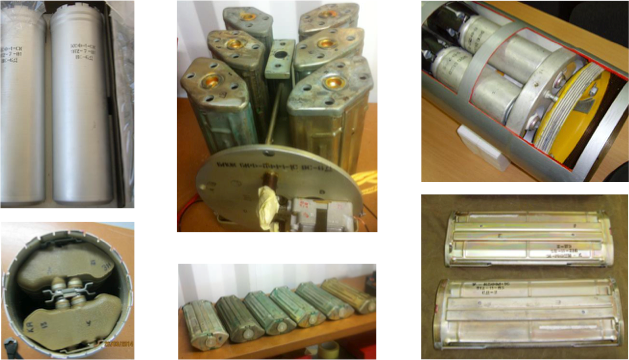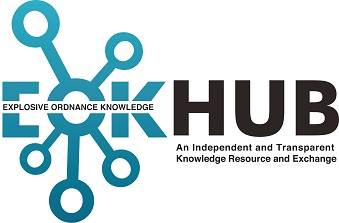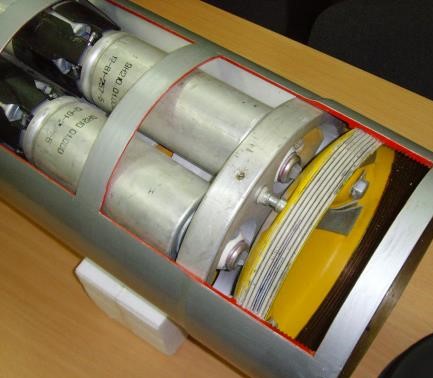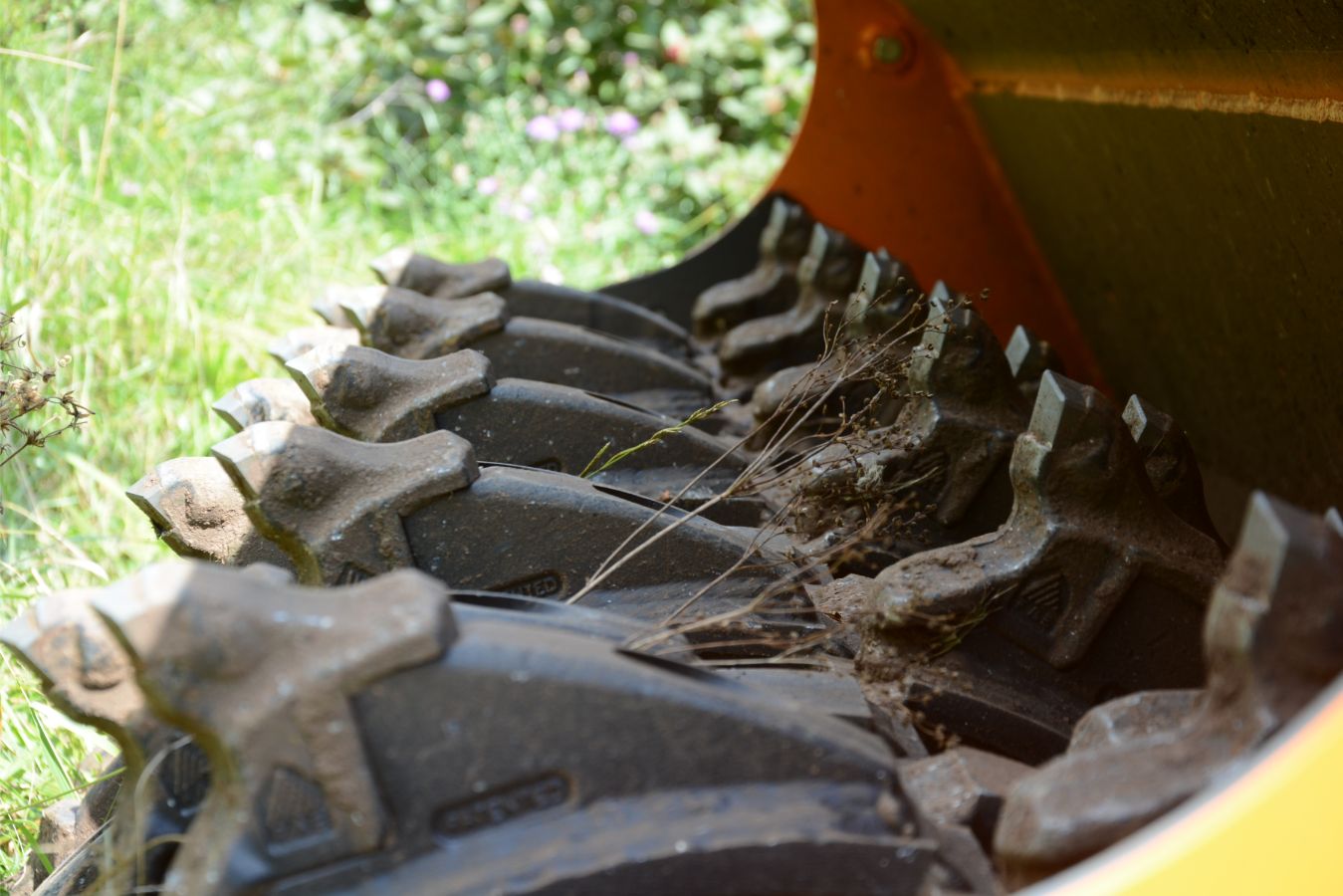Our readers might remember our recent article featuring Daniel Högsta, winner of the Nobel Peace Prize in 2017 for his work at ICAN in Nuclear Weapons Disarmament. When Nobel patented dynamite as a vast improvement in safety over previously used nitroglycerin, he also proceeded to establish companies around the world to begin producing this safer explosive in order to protect the patent. Alfred Nobel founded the Spanish company MAXAM 147 years ago, which would later integrate EXPAL.
EXPAL continues in the tradition of increasing safety today, particularly in its demilitarization and EOD operations. It should be noted that EXPAL is also active in the production of explosives for the commercial sector (building and mining) as well as the defense sector. In this latter capacity, EXPAL began with the Spanish government in 1911, focusing first in Naval solutions, and moving progressively on to land and air. Today EXPAL, in its demilitarization capacity deals with NATO countries and their allies, with a strong presence in the USA, including Dallas (TX), Texarkana (TX/AR), and Camden (LA). In the European Union EXPAL also has a permanent presence in Denmark, Italy, and Bulgaria.
Jose M. Galisteo is the Demilitarization Product Manager at the Spain-based company EXPAL. I met up with him recently in Madrid to discuss his experiences in the sector and his visions for the future. I also met with Javier Gonzalez, Senior Operations Project Manager, to learn about a specific demilitarization operation led by him in Belarus. Galisteo and Gonzalez shared some important lessons learned from this experience.
Galisteo started by clearing up some confusion I had. “EXPAL is a subsidiary of MAXAM, we are one of MAXAM’s four business units.” As the parent company, MAXAM has a global reach in over 100 countries. EXPAL operates in many of these, specializing in global defense solutions. In addition to the offices in Madrid, EXPAL has a demining training facility in EXPAL’s demilitarization plant in Cáceres. In the 1980s, EXPAL’s demilitarization operations began to take shape in response to the Convention on the Prevention of Marine Pollution by Dumping of Wastes and Other Matter (known as the London Convention), which entered into force in 1975. For a long time, EXPAL served as Spain’s singular source for environmentally safe disposal of munitions.
EXPAL’s demilitarization activities are not restricted to Spain alone. In fact, EXPAL has permanent presences in Denmark, Italy, and Bulgaria as well as the United States. “This puts EXPAL in a unique position to efficiently engage with demilitarization efforts around Europe without exposing the population to risks inherent in munitions transport,” said Galisteo, commenting further that EXPAL also provides ad-hoc solutions for in-situ destruction. In fact, much of EXPAL’s efforts in demilitarization are custom made. “We adapt our solutions to the client’s needs,” said Galisteo, as he introduced me to Javier Gonzalez.
“The project in Rechitsa, Belarus, was a complicated one,” began Gonzalez, as he proceeded to detail the efforts required to effectively destroy a large amount of explosives. Gonzalez served as Project Manager for this bid, as well as Country Manager and chief Point of Contact for the Belarusian Government in Minsk. In this final capacity, Gonzalez pointed out that a bigger challenge than the demilitarization was actually the inter-agency coordination and working with local authorities, particularly with regard to emissions controls. “It was only thanks to the fluent relation and strong collaboration with the local authorities and military bodies that we were able to solve issues that otherwise would have delayed the project.” But first Gonzalez set the stage, explaining in more detail:

Figure 1 Deployment Canisters: KSF-1, KSF-1S; BKF-PFM-1S; 9M27K3
“Rechitsa hosted a munitions stockpile that had a large amount of anti-personnel mines, namely the PFM-1 and PFM-1S. The PFM-1 is an anti-personnel mine that detonates by stepping on it with 5 kg of pressure, whereas the PFM-1S also incorporates a 10 to 48-hour delay before detonation.” These mines were deployed through three types of canisters (see Figure 1). Of critical concern was a liquid explosive component called VS-6D, whose off-gas composition was 20% unknown. Gonzalez led EXPAL’s engagement with the Science and Technology Center of Ukraine, which had previously determined the unique molecular composition, in order to design the appropriate off-gas treatment.
Having determined the appropriate demilitarization solution, designed to meet the strict emissions requirements of European Directive 2000/76/EC, Javier Gonzalez, proceeded to design a custom-built disposal unit (see Figure 2). The whole unit was built in Spain and Germany and shipped to Belarus where final adjustments were implemented.

Figure 2 Detonation Chamber
“We are proud of our achievements over the past 40 years, but we are always learning,” said Galisteo. One of the principal lessons learned on this project was never to undervalue administrative coordination. “The process starts with military coordination, but very quickly begins to involve all administrative facets, including police, environmental services, and other government agencies.” It took this group one year and eight months to agree to a set of operating standards for environmental compliance. Belarus did not have environmental standards in place for commercial operations in demilitarization – in the end, they finally agreed to use the European Directive. “It’s best to get all players on the same page as soon as possible,” said Galisteo. “Once that was agreed, it took us two weeks to get established.”
“Once the legal environmental requirements were appropriately addressed, the disposal of the mines was fairly straightforward,” said Gonzalez. In the end, Gonzalez oversaw the destruction of over three million landmines, successfully disposing of the dangerous VS-6D liquid explosive equivalent to almost 105 tons of TNT (NEQ).
One of the secrets to being able to deploy quickly and operate safely is teamwork. Annual meetings allow all divisions to get together to share ideas, re-center on EXPAL’s values, and to have fun. The last meeting? “It was in Rota, and we had a dance competition,” said Galisteo, laughing.
Note
3.366.500 mines PFM-1 and PFM-1S
Each mine has 40 gr of VS-6D explosive
It makes 134.660.000 gr of Total VS-6D explosive
TNT equivalent factor for VS-6D is 0,78
It makes 105.000.000 gr of TNT equivalent to 105 tons (NEQ)



